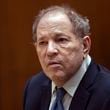Falcons coach Dan Quinn is sticking with offensive coordinator Steve Sarkisian after a porous first season in his position.
“I have no interest in making change just for the sake of change,” Quinn said Thursday.
In Quinn’s eyes, there was plenty of blame to be spread around for the offense’s drastic drop in several key statistical areas under Sarkisan, who hadn’t been the NFL since 2005 and never was a full-time NFL play-caller.
The offense averaged 33.8 points per game under coordinator Kyle Shanahan in 2016 and dropped to 22.1 last season, which ranked 15th, nearly out of the top half of the league.
The Falcons had 19 explosive touchdowns from outside of the red zone in 2016, but only seven this season.
“When you have that big of a gap, that’s surprising, that’s 84 more points on the big plays,” Quinn said.
The Falcons fell off drastically inside the opposition’s 20-yard line, the so-called red zone. They were 64.5 percent in 2016, which ranked eighth in the NFL. Under Sarkisian, they were 49.1 and ranked 23rd.
“Where we need the most work is going to be in the high-red zone,” Quinn said. “That’s where we didn’t even get some of our drives extended. As well as how we played on third downs, it wasn’t in that area. OK, I’m at the 18 and convert it to go down lower. You can be sure, that’s going to be a hot topic for us as we go through the offseason.”
Here’s our position-by-position analysis of the Falcons’ 2017 offense:
Quarterbacks. Matt Ryan and Matt Schaub.
Foiled by his receivers and shaky pass protections, Ryan’s play was below the MVP level he set in 2016.
Ryan completed 342 of 529 passes (64.7 percent) for 4,095 yards, 20 touchdowns and 12 interceptions.
Ryan threw 18 fewer touchdown passes and five more interceptions. His 20 touchdown passes were his lowest since he tossed 16 as a rookie in 2008.
His spike in interceptions came from seven dropped or tipped passes by his receivers, who led the league in dropped passes.
The Falcons know that Ryan is most effective when he can step up in the pocket and deliver the ball. With shaky play from guards Wes Schweitzer and Ben Garland, Ryan rarely had a firm pocket.
Ryan was on the move too much. He rushed for 143 yards, the second-highest total of his career. He had 145 yards in the 2014 season.
Schaub, who'll turn 37 in June, played in four games and completed 1 of 3 passes. He's set to enter the last year of his contract, which has a $2.75 base salary with a $1.5 roster bonus. Grade: C
Running backs. Devonta Freeman, Tevin Coleman, Terron Ward, Terrence Magee and fullback Derrick Coleman.
Freeman was slowed by a two concussions and a knee injury. He missed three games and failed to reach a thousand yards rushing after two consecutive seasons of more than 1,000 yards. He also continued to struggle in blitz pickup.
He came back and ran hard after both concussions. The team may have overpaid in making him the highest paid running back in the league.
Coleman ran much stronger. He had 156 carries for 628 yards and five touchdowns. He also caught 27 passes for 299 yards and three touchdowns. Ward was a steady backup
Coleman was not an viable lead blocker, didn't come through as a pass catcher (28.6 percent catch rate) and didn't help the short-yardage attack. Grade: C
Tight ends. Austin Hooper, Levine Toilolo and Eric Saubert.
Hooper started with a monster season-opening game against the Chicago Bears, but proved to be undependable as the season progressed. He eventually lost the confidence of his quarterback. He caught 49 of 65 targets (75.4 percent catch rate) for 526 yards and three touchdowns. He had 265 yards after the catch.
He didn’t fight back to the ball on a memorable play against Miami and had three drops. Toilolo, who’s essentially a blocking tight end, caught 12 of his 14 targets for 122 yards and one touchdown.
Saubert is a project. He played 30 snaps on offense and 212 on special teams. Grade: D
Wide receivers. Julio Jones, Mohamed Sanu, Taylor Gabriel, Justin Hardy, Nick Williams and Marvin Hall.
Jones, who had offseason foot surgery and never looked close to his best self, had a 59.5 percent catch ratio (148 targets, 88 catches), which was his second-lowest since his rookie season, when he had a 56.8 percent catch ratio.
Jones caught only 6 of 22 passes (27 percent) thrown to him inside the 20-yard line for one touchdown. By comparison, Pittsburgh’s Antonio Brown caught 13 of 23 (56.5 percent) of his passes in the red zone for six touchdowns.
“That’s a stat that you don’t want to hear as a coach,” Quinn said.
Jones finished with 1,444 yards and three touchdowns.
Sanu had a 69.8 percent catch ratio as he hauled in 67 of 96 targets and had 703 yards and tied a career-high with five touchdowns.
But Jones (seven) and Sanu (six) had too many dropped passes.
Hardy was steady. Gabriel had a major dropoff and likely won’t be re-signed.
In 2016, Gabriel had 11 plays of 19 yards or more and five long touchdowns (76, 64, 47, 35 and 25 yards.) He had only one touchdown last season, which went for 40 yards. He only had four plays for 19 yards or more.
Look for the Falcons to attempt to upgrade the depth at this position. Gabriel didn't make teams pay for doubling Jones as he did in 2016. Grade: D
Offensive line. Starters – left tackle Jake Matthews, left guard Andy Levitre, center Alex Mack, right guard Wes Schweitzer, right tackle Ryan Schraeder. Backups – guards Ben Garland and Sean Harlow and tackles Ty Sambrailo and Austin Pasztor.
One of the key reasons why the Falcons went to Super Bowl LI was that the same five players on the offensive line started all 19 games. They couldn’t dodge the injury bug in 2017 and started four combinations of players.
Also, right guard Wes Schweitzer, who’s scrappy, was a liability against elite defensive tackles. Levitre was solid. Garland was not an adequate backup.
The team wants Levitre back.
“I hope so,” Quinn said. “I don’t know where he’s all the way at. That will be a question for way later.”
The Falcons don’t have a lot of money in free agency and can’t go after a top-quality veteran to improve the line. Harlow was inactive for all 16 games, but could jump in the mix in 2018.
Garland and Schweitzer combined to surrender 46 total pressures this season, with Garland playing 341 snaps in relief of an injured Levitre.
Matthews and Schraeder were solid. Grade: C-minus.






